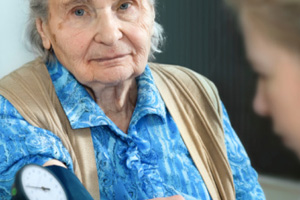RESEARCH showing that older women with breast cancer are more likely to die of something other than their cancer reinforces the need for doctors to treat the whole patient rather than just the cancer, experts say.
A new study in Breast Cancer Research, analysed US data on 63 566 women aged 66 years or older who were diagnosed with breast cancer between 1992 and 2000. (1)
During a median follow up of almost 9 years, just over half (51.3%) of the women died, at a median age of 83 years. Among the total study population, 15.1% died of breast cancer and 36.2% died of other causes. Cardiovascular disease was the primary cause of death (15.9% of total study population).
The researchers said that there was a risk that cardiovascular disease may be undertreated and underdiagnosed in women with breast cancer.
“… their cancer diagnosis can be perceived by both the patient and her caregivers as the overriding medical priority”, the researchers wrote.
Professor John Boyages, director of the Westmead Breast Cancer Institute and author of the consumer book for breast cancer patients, Breast cancer: taking control, said that the research showed the importance of holistic patient care.
“It’s vital that as doctors we don’t forget to look after the whole patient. Some of our breast cancer treatments can make you gain weight and there is increasing evidence that physical activity and losing weight may improve prognosis. It’s also good for your heart”, he said.
Professor Boyages emphasised the need for breast cancer physicians and GPs to encourage breast cancer patients to quit smoking, reduce saturated fats in their diet and have regular checks for serum lipid levels and blood pressure.
Associate Professor Nehmat Houssami, a breast physician and professor of public health at the University of Sydney, said it was not surprising that cardiovascular disease made a bigger contribution to mortality than breast cancer, given the age group of the women. The study also found that, as women aged, a smaller proportion of all deaths were due to breast cancer.
Professor Houssami said the study outcomes were likely due to the combined effects of both improved treatment and detection through breast screening.
She said given the age of the cohort and the timing of diagnosis, the women were probably exposed to mammography screening, which is associated with a reduction in breast cancer deaths. Improved treatment, particularly the use of adjuvant treatment such as tamoxifen, was also responsible for improving breast cancer survival.
The researchers also noted that chemotherapy had been associated with long-term cardiac toxicity in breast cancer patients.
Professor Houssami said the study findings may be reassuring for older women diagnosed with breast cancer.
“It is reassuring to have the information, and to be able to discuss the generally good prognosis for most older women affected by breast cancer. Doctors can reassure patients that outcomes, given adequate treatment, are likely to be good.”
However, Professor Houssami said some women in the study were more likely to die from breast cancer than other causes, such as those diagnosed with stage III or IV cancer.
Among the women in the study, 13.0% had diabetes, 12.8% had cardiovascular disease and 8.8% had chronic obstructive pulmonary disease at the time of diagnosis with breast cancer.
The research added weight to previous evidence showing that comorbidities had a significant effect on overall survival among breast cancer patients.
The study also found that comorbidities had a significant effect on breast cancer specific mortality, which the researchers believed was a new finding.
Professor Houssami said this was an interesting finding. “It is possible that this may be due to older women with serious comorbidities receiving less intensive treatment including less systemic treatments”, she said.
– Sophie McNamara
1. Breast Cancer Research 2011; 13: R64 doi:10.1186/bcr2901
Posted 27 June 2011

 more_vert
more_vert